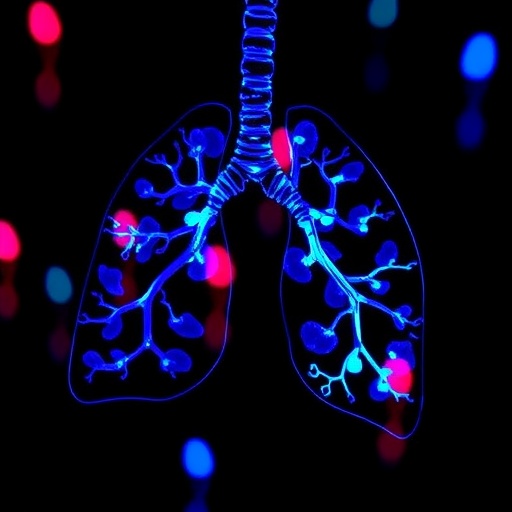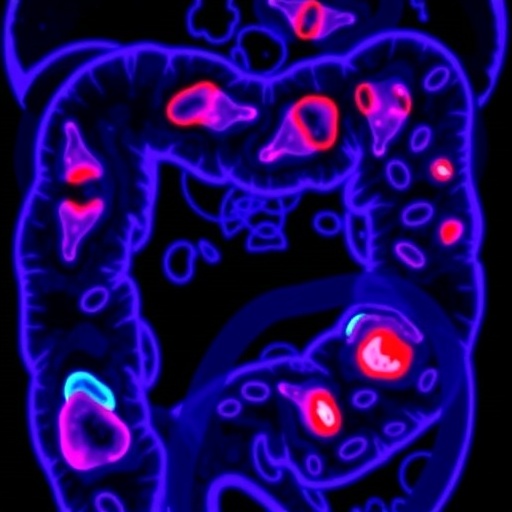In the realm of cancer research, the relentless quest for effective, safer, and more natural anticancer agents continues to capture the scientific community’s attention. One compound that has recently surged into the spotlight is pterostilbene, a naturally occurring stilbenoid chemically related to resveratrol but boasting distinctive pharmacokinetic advantages. The latest breakthrough research, spearheaded by Rehman and Amen and published in Medical Oncology in 2025, reveals pterostilbene’s promising potential as a natural anticancer agent specifically targeting gynecological cancers. This discovery unfolds a compelling narrative on the intersection of natural compounds and oncological therapeutics—a frontier ripe with potential to revolutionize cancer treatment.
Gynecological cancers, encompassing malignancies of the ovaries, cervix, uterus, and related reproductive organs, represent a significant global health challenge, ranking among the leading causes of cancer-related mortality in women worldwide. Conventional treatments such as chemotherapy, radiation, and surgery, while often effective, carry the burden of severe side effects, drug resistance, and frequent relapse. Researchers have thus been driven to identify novel agents capable of selectively targeting malignant cells while minimizing collateral damage to healthy tissues. Here, pterostilbene emerges as a compelling candidate due to its multifaceted biological activities and advantageous bioavailability.
Chemically, pterostilbene is a dimethylated analog of resveratrol, enhancing its lipophilicity and metabolic stability. These chemical modifications enable pterostilbene to cross cellular membranes more readily and resist rapid metabolic degradation, resulting in improved absorption and prolonged systemic circulation. This pharmacokinetic profile confers significant therapeutic potential, especially in targeting systemic diseases such as cancer. The study by Rehman and Amen delves deeply into these properties, emphasizing pterostilbene’s superior bioavailability compared to its precursor, resveratrol, which has been historically limited by poor stability and low systemic levels following oral administration.
Beyond its bioavailability, pterostilbene exerts potent anticancer effects through diverse molecular pathways. The study extensively discusses its capacity to induce apoptosis in gynecologic cancer cells, a programmed cell death process vital to controlling cancer proliferation. Pterostilbene achieves this by modulating intrinsic and extrinsic apoptotic pathways, involving the upregulation of pro-apoptotic proteins like Bax and caspases, alongside downregulation of anti-apoptotic factors such as Bcl-2. This dual modulation disrupts the intrinsic survival mechanisms of malignant cells, effectively triggering cell death while sparing normal cells.
Further molecular insights from the research reveal that pterostilbene actively interferes with cancer cell cycle progression. By arresting cells at specific checkpoints—particularly in the G1 and G2/M phases—pterostilbene inhibits cellular replication. This blockade results from the modulation of cyclin and cyclin-dependent kinase activities, critical regulators of cell cycle transitions. The interruption of these cycles not only halts tumor proliferation but also sensitizes malignant cells to other therapeutic interventions, indicating its potential role as an adjunct treatment.
The anti-inflammatory properties of pterostilbene also contribute significantly to its anticancer potential. Chronic inflammation is well-known to foster tumorigenesis by creating a microenvironment conducive to cancer cell survival and metastasis. Pterostilbene inhibits key inflammatory mediators, including NF-κB and STAT3 signaling pathways, which are frequently upregulated in gynecological cancers. By suppressing these pathways, pterostilbene mitigates the pro-tumorigenic inflammatory milieu, thereby impeding cancer progression and metastasis.
Rehman and Amen’s study highlights another critical dimension of pterostilbene’s action: its ability to counteract oxidative stress in the tumor microenvironment. Reactive oxygen species (ROS) play dual and often paradoxical roles in cancer biology. While excessive ROS can induce cell death, moderate levels typically promote tumor growth and survival by activating proliferative signaling cascades. Pterostilbene exerts antioxidant effects by upregulating endogenous enzymes such as superoxide dismutase and catalase, restoring redox homeostasis, and preventing ROS-mediated DNA damage and mutations that drive oncogenesis.
Beyond the molecular specifics, the research emphasizes pterostilbene’s favorable safety profile in preclinical models. Animal studies conducted alongside cellular assays revealed minimal toxicity, especially compared to conventional chemotherapeutic agents. This biocompatibility is pivotal for its translational potential, suggesting it could be administered over extended periods without significant adverse effects. Such safety considerations are paramount when developing therapies for gynecological cancers, where patient quality of life is a critical concern.
A particularly exciting aspect of this study lies in its exploration of pterostilbene’s synergistic effects when combined with existing chemotherapeutics. The research demonstrates that pterostilbene not only enhances the cytotoxic efficacy of drugs like cisplatin but also helps mitigate their associated toxicities. This synergy could pave the way for dose reductions in conventional drug regimens, minimizing adverse reactions while maintaining or even improving therapeutic outcomes. Such a paradigm shift could transform current standards of care, especially for patients with advanced-stage or drug-resistant tumors.
Additionally, the authors explore the role of epigenetic regulation in pterostilbene’s anticancer activity. Aberrant epigenetic modifications, such as DNA methylation and histone acetylation, significantly contribute to gynecological cancer pathogenesis by silencing tumor suppressor genes. Pterostilbene influences epigenetic machinery, reactivating these genes and restoring cellular regulatory mechanisms. This epigenetic modulation represents an innovative therapeutic avenue, offering a strategy to reprogram cancer cells towards normalized function or increased sensitivity to other treatments.
From a clinical perspective, these comprehensive findings collectively argue for the advancement of pterostilbene into human trials for gynecological cancers. Early-phase clinical trials would be essential to validate these preclinical results, delineate optimal dosing strategies, and monitor long-term safety and efficacy profiles. Given the promising preclinical data showcasing reduced tumor growth, apoptosis induction, and favorable toxicity, the groundwork for translational research is convincingly laid out.
The timing of this discovery is particularly pertinent considering the rising incidence of gynecological malignancies globally and the pressing need for improved therapies. The integration of plant-derived compounds into oncological treatment regimens represents a growing trend aligned with precision medicine approaches. Pterostilbene, with its unique combination of bioavailability, multitargeted action, and low toxicity, epitomizes this new generation of therapeutics bridging natural product chemistry and modern oncology.
Furthermore, the potential socioeconomic impact of pterostilbene cannot be overstated. Natural compounds, often derived from abundant botanical sources such as blueberries and grapes, promise a more cost-effective pipeline for drug development. This accessibility could foster equitable cancer care, especially in resource-limited settings where access to expensive chemotherapeutics is often restricted. Moreover, natural agents appeal to patient preferences for treatments perceived as gentler and more holistic, potentially improving treatment adherence and overall outcomes.
As cancer treatment paradigms evolve, the importance of addressing tumor heterogeneity and overcoming drug resistance grows. Pterostilbene’s multifaceted mechanisms of action—targeting apoptosis, cell cycle regulation, inflammation, oxidative stress, and epigenetics—equip it to tackle these challenges from multiple fronts simultaneously. This multi-pronged approach may reduce the likelihood of resistance development, a common downfall of monotherapies.
While these revelations herald a hopeful future, several challenges remain in fully realizing pterostilbene’s clinical utility. These include optimizing formulation for maximal bioavailability, understanding pharmacodynamics in diverse patient populations, and elucidating potential interactions with other drugs. Further preclinical investigations should also assess its efficacy across different gynecological cancer subtypes and stages, as tumor biology can drastically vary, influencing treatment response.
In sum, the study by Rehman and Amen marks a significant milestone in the exploration of natural compounds for cancer therapy, positioning pterostilbene as a powerful molecule capable of transforming gynecological cancer management. Its unique chemical properties, combined with its diverse biological effects and favorable safety profile, position it not merely as a dietary supplement but as a credible anticancer agent. This work signals a paradigm shift, encouraging deeper scientific exploration of naturally derived compounds that harbor untapped therapeutic potential.
As the scientific community digests these findings, excitement builds around the prospect of integrating pterostilbene into oncological treatment regimens. The potential to enhance patient survival while mitigating adverse effects aligns with the overarching goals of precision and humane cancer care. Continued collaborative efforts spanning chemistry, molecular biology, pharmacology, and clinical research will be vital in transforming this promising natural compound from laboratory bench to bedside reality. The future of gynecological cancer treatment may well be intricately linked to the molecular marvel of pterostilbene.
Subject of Research: Pterostilbene as a natural anticancer agent targeting gynecological cancers.
Article Title: Pterostilbene as a promising natural anticancer agent in gynecological cancers.
Article References:
Rehman, T., Amen, Y. Pterostilbene as a promising natural anticancer agent in gynecological cancers. Med Oncol 42, 466 (2025). https://doi.org/10.1007/s12032-025-03013-8
Image Credits: AI Generated
Tags: advantages of natural anticancer agentsalternative treatments for cancerbenefits of pterostilbenecancer mortality in womengynecological cancer treatment optionsinnovative cancer therapiesnatural compounds in oncologypharmacokinetics of pterostilbenepterostilbene as a natural anticancer agentreducing side effects of cancer treatmentresearch on pterostilbene in medicinetargeting gynecological tumors





